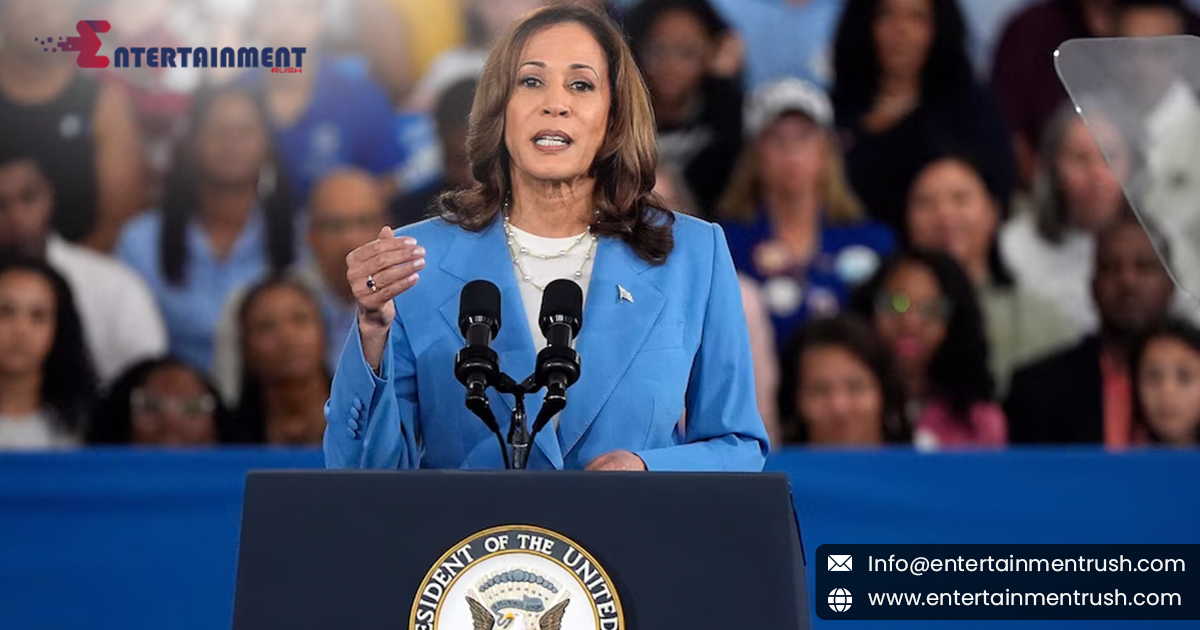In a significant move to reshape America’s economic landscape, Vice President Kamala Harris has unveiled her plan for an ‘Opportunity Economy’. This ambitious initiative aims to create a more inclusive and equitable economic environment by addressing systemic barriers and expanding access to opportunities for all Americans. Here’s a closer look at the key components of Harris’s plan and how it seeks to drive meaningful change.
What is the ‘Opportunity Economy’?
The concept of the ‘Opportunity Economy’ revolves around creating a fair and just economic system where every individual has the chance to succeed, regardless of their background or circumstances. Kamala Harris’s vision for this economy is to ensure that economic growth benefits everyone, with a particular focus on historically underserved communities.
The ‘Opportunity Economy’ plan addresses several critical areas, including job creation, education, business development, and social equity. By targeting these sectors, Harris aims to reduce income inequality, close the racial wealth gap, and foster sustainable economic progress.
Key Components of the ‘Opportunity Economy’ Plan
Expanding Job Opportunities
Central to the ‘Opportunity Economy’ plan is a focus on job creation and workforce development. Harris proposes substantial investments in infrastructure projects, green energy, and technology to generate high-quality jobs across various sectors. The plan includes support for training and reskilling programs to equip workers with the skills needed for the evolving job market.
Additionally, Harris emphasizes the importance of supporting small businesses and entrepreneurs, particularly those in marginalized communities. By providing access to capital, mentorship, and resources, the plan aims to foster entrepreneurship and drive economic growth from the ground up.
Enhancing Educational Access
Education plays a pivotal role in the ‘Opportunity Economy’. Harris’s plan seeks to make higher education more affordable and accessible by increasing funding for community colleges, reducing student loan debt, and expanding scholarship opportunities. The goal is to ensure that every student has the chance to pursue higher education and acquire the skills necessary for success in the modern economy. the plan addresses disparities in K-12 education by investing in schools in underserved areas, improving teacher training, and enhancing educational resources. By addressing these inequities, Harris aims to provide all students with a solid foundation for future success.
Promoting Business Development
Supporting business development, especially in underserved communities, is another cornerstone of the ‘Opportunity Economy’. Harris proposes initiatives to increase access to capital for minority-owned businesses, streamline the process for obtaining loans, and offer grants and incentives for startups and small enterprises.
The plan also includes efforts to foster innovation and entrepreneurship by investing in research and development, supporting tech incubators, and promoting partnerships between businesses and educational institutions. These measures are designed to stimulate economic activity and create new opportunities for growth and success.
Addressing Social Inequities
The ‘Opportunity Economy’ plan places a strong emphasis on addressing social inequities and ensuring that economic benefits are equitably distributed. Harris proposes policies to tackle systemic racism, enhance civil rights protections, and promote diversity and inclusion in all sectors of the economy.
Key initiatives include reforming criminal justice practices, investing in affordable housing, and expanding access to healthcare. By addressing these broader social issues, Harris aims to create a more just and equitable society where everyone has the opportunity to thrive.
Sustainable Economic Growth
Sustainability is a critical component of the ‘Opportunity Economy’. Harris’s plan includes measures to promote green energy and environmental stewardship, aiming to create jobs while addressing climate change. Investments in renewable energy, energy efficiency, and climate resilience are designed to drive long-term economic growth and protect the environment for future generations.
The plan also focuses on ensuring that economic growth is inclusive and benefits all segments of society. By integrating sustainability into economic policies, Harris seeks to build a resilient economy that supports both people and the planet.
The Impact of the ‘Opportunity Economy’
Kamala Harris’s ‘Opportunity Economy’ plan represents a comprehensive approach to addressing some of the most pressing economic and social challenges facing the United States. By focusing on job creation, education, business development, and social equity, the plan aims to create a more equitable and prosperous society.
If implemented effectively, the ‘Opportunity Economy’ could lead to significant improvements in economic opportunities for marginalized communities, reduce income inequality, and foster sustainable growth. As the plan continues to evolve, it will be crucial to monitor its progress and assess its impact on the broader economic landscape.
Conclusion
Kamala Harris’s unveiling of the ‘Opportunity Economy’ plan marks a bold step towards creating a more inclusive and equitable economic system. By addressing key areas such as job creation, education, business development, and social equity, the plan seeks to provide opportunities for all Americans and drive meaningful change. As the country navigates the complexities of economic recovery and growth, the ‘Opportunity Economy’ offers a vision for a more just and prosperous future.
